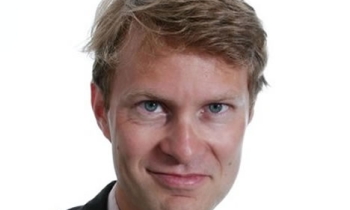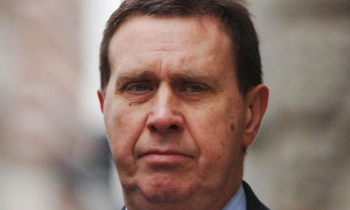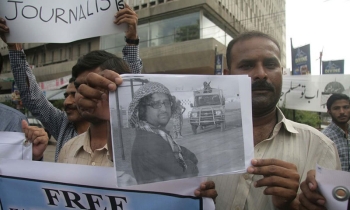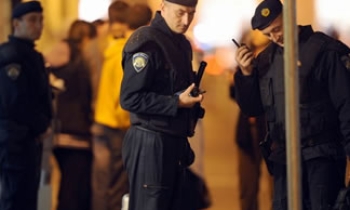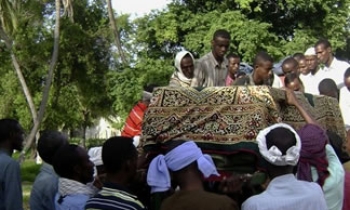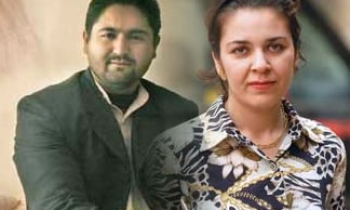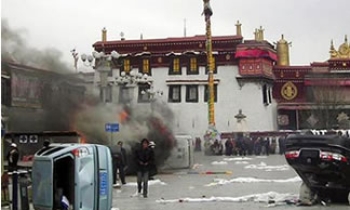If sex, religion and caste are to be taken together, more than two-thirds of the top media professionals in the country come from less than 10 per cent of the population. Hindu upper caste men, who are barely 8 per cent of the country's population, have a majority share of 71 per cent among top media professionals in the country. These findings are from the same survey of the social profile of key decisionmakers in the national media that had created a flutter last month.

The findings are based on a survey of the social background of 315 key decisionmakers from 37 "national" media organisations (up to 10 from each) based in Delhi. The survey was carried out by volunteers of Media Study Group between May 30 and June 3 this year. It was designed and executed by Anil Chamaria, freelance journalist, and Jitendra Kumar, independent researcher, from Media Study Group, and Yogendra Yadav, senior fellow, Centre for the Study of Developing Societies (CSDS).
The differences between the sexes, the survey found, is stark: the share of women is abysmally low at 17 per cent. The proportion of men and women in the Hindi media is lower still. It is 86:14 in the Hindi print media and 89:11 in the Hindi electronic media. The representation of women is marginally better in the English media with 84:16 in the Enlish print media and 68:32 in the English electronic media.
Hindus dominate the media far in excess of their share (81 per cent) in the country's population at 90 per cent. In the Hindi print media, this figure stands at a whopping 97 per cent. The percentage of Hindu decisionmakers is closest to the national average in the English electronic media with 85 per cent. In both the English print media and Hindi electronic media the percentage stands at 90.
Muslims, who are 13 per cent of the population, are under-represented at the decisionmakers level with only 3 per cent. In the English electronic media, in fact, there are none. The figures for the Hindi electronic media, English print media and Hindi print media are 6 per cent, 3 per cent, and 2 per cent respectively.
Christians, who make up 2 per cent of the country's population, are absent in the Hindi print media but are a strong constituent in the English electronic media with 13 per cent. Overall, Christians account for 4 per cent of the decisionmakers, and 4 per cent in the English print media and 1 per cent in the Hindi electronic media.
The overall representation of Sikhs, constituting 2 per cent of the population, is less than the national average at 1 per cent. They are absent everywhere except in the English electronic media where they make up for 2 per cent of the decisionmakers.

The caste-community profile data shows equally glaring discrepancies between a group's share in the country's population and its represenation among key decisionmakers in the so-called national media.
"Twice born" Hindus (or, dwijas) comprising Brahmins, Kayasthas, Rajputs, Vaishyas and Khatris are about 16 per cent of India's population, but they are 86 per cent of the key media decisionmakers in the survey. Brahmins (including Bhumihars and Tyagis) alone constitute 49 per cent of the key media personnel. Hindu OBCs who are 34 per cent of the country's population are only 4 per cent of the top media personnel.
Scheduled castes and scheduled tribes who constitute 16 per cent and 8 per cent respectively of the country's population are absent from the list of key media personnel. Intermediary Hindu castes like Jats, Reddys, Marathas and Patels fare marginally better than with 3 per cent against a population share of 8 per cent.
Brahmins (including Bhumihars and Tyagis) dominate the national media. The dominance is severe in the case of Hindi print, where they occupy 59 per cent positions. In one Hindi newspaper all the top 10 slots are occupied by Brahmins. In English electronic, Hindi electronic and English print, the share is 52 per cent, 49 per cent, and 44 per cent respectively.
The non-dwija forward castes are absent in the Hindi print and electronic media altogether. OBCs are the least in the English print with only 1 per cent. The survey noted, "While it was difficult to determine the caste status of non-Hindu persons, it appears unlikely that many of the Muslims, Chritians and Siks belong to OBCs."
Social groups that suffer "double disadvantage" are also almost absent among the key decisionmakers: there are no women among the few OBC decisionmakers and negligible backwards among Muslims and Christians. The researchers put it bluntly, "India's 'national' media lacks social diversity, it does not reflect the country's social profile."

For this survey, 40 "national" media organisations located in Delhi were identified. These included all the major newspapers, news magazines, radio channels, television channels and news agencies that could be said to have a national spread. Of these, information could be obtained from 37 organisations. Different publications or channels of the same media house were treated as different organisations.
For each of these organisations, the researchers sought information on the top 10 "key decisionmakers" who matter in deciding the news and editorial policy of the organisation. For each of these persons thus identified, information was collected on their social profile in terms of their sex, age, religion, caste/community, mother tongue, and state of domicile. Information could be fished out for 315 individuals. Since the information was gathered not by face-to-face interviews but by speaking to colleagues and other infomants, the data may contain some errors, the survey noted.
The newspapers and news magazines surveyed were Hindustan Times, the Times of India, the Economic Times, the Hindu, the Indian Express, the Financial Express, India Today, Outlook, Outlook (Hindi), Dainik Hindustan, Navbharat Times, Jansatta, India Today (Hindi), Rashtriya Sahara, and Dainik Jagaran.
The television channels studied were NDTV 24x7, NDTV Profit, NDTV India, Star News, CNBC, CNBC AWAZ, CNN-IBN, Sahara Samay, Times Now, S-1, Janmat, Aaj Tak, Headlines Today, DD News, Zee News, and IBN-7. The other news establishments were PTI, PTI Bhasha, UNI, Univarta, ANI, and BBC Radio Hindi. The researchers did not have any data about decisionmakers in All India Radio, the Pioneer, and Tehelka.

